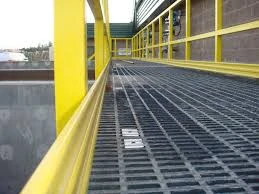
-
 Afrikaans
Afrikaans -
 Albanian
Albanian -
 Amharic
Amharic -
 Arabic
Arabic -
 Armenian
Armenian -
 Azerbaijani
Azerbaijani -
 Basque
Basque -
 Belarusian
Belarusian -
 Bengali
Bengali -
 Bosnian
Bosnian -
 Bulgarian
Bulgarian -
 Catalan
Catalan -
 Cebuano
Cebuano -
 China
China -
 China (Taiwan)
China (Taiwan) -
 Corsican
Corsican -
 Croatian
Croatian -
 Czech
Czech -
 Danish
Danish -
 Dutch
Dutch -
 English
English -
 Esperanto
Esperanto -
 Estonian
Estonian -
 Finnish
Finnish -
 French
French -
 Frisian
Frisian -
 Galician
Galician -
 Georgian
Georgian -
 German
German -
 Greek
Greek -
 Gujarati
Gujarati -
 Haitian Creole
Haitian Creole -
 hausa
hausa -
 hawaiian
hawaiian -
 Hebrew
Hebrew -
 Hindi
Hindi -
 Miao
Miao -
 Hungarian
Hungarian -
 Icelandic
Icelandic -
 igbo
igbo -
 Indonesian
Indonesian -
 irish
irish -
 Italian
Italian -
 Japanese
Japanese -
 Javanese
Javanese -
 Kannada
Kannada -
 kazakh
kazakh -
 Khmer
Khmer -
 Rwandese
Rwandese -
 Korean
Korean -
 Kurdish
Kurdish -
 Kyrgyz
Kyrgyz -
 Lao
Lao -
 Latin
Latin -
 Latvian
Latvian -
 Lithuanian
Lithuanian -
 Luxembourgish
Luxembourgish -
 Macedonian
Macedonian -
 Malgashi
Malgashi -
 Malay
Malay -
 Malayalam
Malayalam -
 Maltese
Maltese -
 Maori
Maori -
 Marathi
Marathi -
 Mongolian
Mongolian -
 Myanmar
Myanmar -
 Nepali
Nepali -
 Norwegian
Norwegian -
 Norwegian
Norwegian -
 Occitan
Occitan -
 Pashto
Pashto -
 Persian
Persian -
 Polish
Polish -
 Portuguese
Portuguese -
 Punjabi
Punjabi -
 Romanian
Romanian -
 Russian
Russian -
 Samoan
Samoan -
 Scottish Gaelic
Scottish Gaelic -
 Serbian
Serbian -
 Sesotho
Sesotho -
 Shona
Shona -
 Sindhi
Sindhi -
 Sinhala
Sinhala -
 Slovak
Slovak -
 Slovenian
Slovenian -
 Somali
Somali -
 Spanish
Spanish -
 Sundanese
Sundanese -
 Swahili
Swahili -
 Swedish
Swedish -
 Tagalog
Tagalog -
 Tajik
Tajik -
 Tamil
Tamil -
 Tatar
Tatar -
 Telugu
Telugu -
 Thai
Thai -
 Turkish
Turkish -
 Turkmen
Turkmen -
 Ukrainian
Ukrainian -
 Urdu
Urdu -
 Uighur
Uighur -
 Uzbek
Uzbek -
 Vietnamese
Vietnamese -
 Welsh
Welsh -
 Bantu
Bantu -
 Yiddish
Yiddish -
 Yoruba
Yoruba -
 Zulu
Zulu
frp housing
Exploring FRP Housing A Sustainable Solution for Modern Living
In an era where sustainability and environmental consciousness are at the forefront of our collective mindset, the quest for innovative housing solutions has never been more critical. One such solution making waves in architectural and construction circles is FRP housing, or Fiber Reinforced Polymer housing. This novel approach to construction not only addresses the pressing need for eco-friendly materials but also presents a plethora of benefits that could redefine modern living.
FRP, or Fiber Reinforced Polymer, is a composite material made by combining a polymer matrix with fibers, such as glass or carbon. The result is a lightweight, high-strength material with enhanced durability and resistance to environmental factors. The incorporation of FRP in housing construction offers a transformative alternative to traditional building materials such as wood, brick, and concrete.
Exploring FRP Housing A Sustainable Solution for Modern Living
Moreover, FRP housing is inherently resistant to various environmental challenges. Unlike wood, which can be susceptible to rot, pests, and moisture, FRP does not degrade when exposed to the elements. This resistance means that homes constructed with FRP can have longer lifespans and lower maintenance costs, providing homeowners with significant long-term savings. Furthermore, FRP is also fire-resistant, enhancing the safety aspect of residential construction.
frp housing

The lightweight nature of FRP materials presents another significant advantage in the realm of housing. Traditional building materials require heavy machinery and extensive labor for transportation and assembly. In contrast, FRP components can be transported with less effort, leading to reduced carbon footprints during construction. The ease of handling FRP also accelerates the construction timeline, allowing projects to be completed more swiftly—an essential factor in addressing housing shortages in many regions.
Another exciting aspect of FRP housing is its adaptability and design flexibility. The inherent properties of FRP allow for intricate designs that may be challenging or impossible with traditional materials. Architects and builders can explore a variety of shapes and structures, resulting in aesthetically pleasing homes tailored to the preferences of modern homeowners. This adaptability can further enhance the livability of spaces, catering to evolving lifestyles and needs.
While the benefits of FRP housing are substantial, it is essential to note that challenges remain. For instance, the initial cost of FRP materials can be higher than traditional materials, which may deter some builders and homeowners. However, this upfront investment can be offset by the long-term savings associated with maintenance, durability, and energy efficiency. Furthermore, as the technology advances and production processes become more streamlined, the costs are expected to decrease, making FRP housing a more accessible option for a broader audience.
In conclusion, FRP housing represents a forward-thinking solution to modern living challenges. As the global population continues to grow and urbanization increases, the demand for innovative, sustainable, and efficient housing solutions will only intensify. The advantages of FRP—its sustainability, durability, lightweight nature, design flexibility, and long-term cost savings—offer a promising path forward. By embracing this technology, we can move closer to addressing housing shortages while also prioritizing the health of our planet. As we build the homes of tomorrow, FRP housing stands out as a testament to the power of innovation and responsible design in creating a more sustainable future for all.









